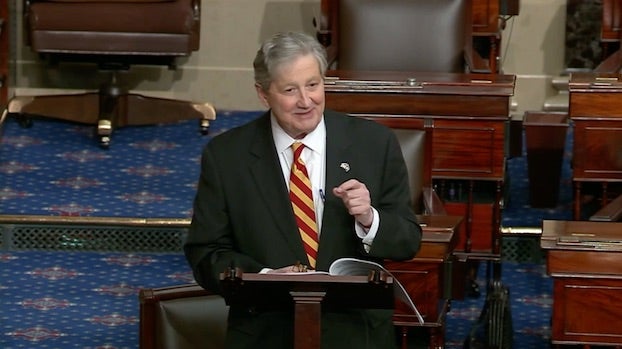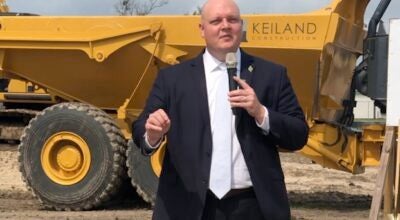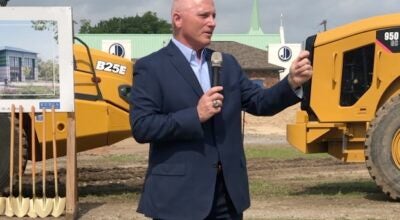IMCAL releases transportation plan for Calcasieu
Published 9:37 am Saturday, March 7, 2015
The industrial expansion planned for the Lake Area will create transportation challenges for residents in the years ahead. But local officials have already begun the task of addressing them.
Representatives from the Imperial Calcasieu Regional Planning and Development Commission met with local officials at the SEED Center on Friday for the release of the two-volume report “Lake Charles Urbanized Area, MTP 2040.” It presents a 25-year blueprint of the transportation improvements, priorities and goals for Calcasieu Parish.
“Is the plan perfect? No plan is perfect,” said Sulphur Mayor Chris Duncan. “Changes have to be made as we go forward with the expansion and the growth that’s going on in the area. But it’s a start; the plan is a start for the future here in Calcasieu Parish.”
The plan separates the parish’s transportation projects into three stages. The first stage, from 2015 to 2020, outlines projects such as a new four-lane road from U.S. 90 to East Houston River Road in Westlake and a new four-lane extension of Nelson Road to Sallier Street.
Stage two spans 2021 to 2030 and includes widening La. 378 from the West Fork Bridge to La. 378 Spur to five lanes and replacing the bridge. Stage two also includes widening La. 27 from Dave Dugas Road to La. 108 in Sulphur to four lanes and widening East Prien Lake Road from La. 14 to Ward Lane Road to four lanes.
Stage three, from 2031 to 2040, includes a new four-lane road at the Choupique Road exit between U.S. 90 and East Houston River Road, widening La. 27 to four lanes between Lewis Street and Bankens Street in Sulphur and widening Gauthier Road to four lanes between Big Lake Road and Common Street.
Grant Bush, IMCAL’s executive director, said the cost for all three stages has a “constrained limit” of $500 million.
“What you will see in the first phase are the projects we will pay for with our 80-20 match,” Bush said. “Those are the projects that we believe we can start design work and move forward with.”
The plan, which was developed in conjunction with city and parish officials, is a prerequisite for parishes to receive federal transit and highway funding assistance at an 80 percent-20 percent cost share.
Public input was solicited in four meetings between February and May of last year.
In addition to the transportation projects, the plan also cites the population growth driving the need for new roads and bridges and other quality-of-life improvements.
The plan projects that by 2040 the region will experience a 37 percent increase in population, a 36 percent increase in “dwelling units” and a 53 percent increase in employment. The plan also projects a 63 percent increase in retail employment and a 40 percent increase in school enrollment.
Also projected, is 1,000 additional acres of park space in the region by 2040 to keep pace with growth. The greatest need, the plan says, will be at “the urban fringes.” Smaller urban parks will also be needed.
The region’s per capita library square footage was deemed “below some standards,” with the greatest future need being in Moss Bluff, south Lake Charles, Carylss and Sulphur. More safe routes to schools will also be needed.
An increased need for sidewalks, bike paths and public transit were also identified.
Parish Administrator Bryan Beam said traffic congestion will increase by more than 45 percent between now and 2020. He said the increase makes it “critical that every transportation option be looked at.”
“It may involve more or different types of bus routes, it may involve park-and-ride options or any other type of thing where people do not have their own vehicle but need to get to their own place of work and back or other needs,” Beam said.
“We need to think bigger because we are going to need more of these types because of (the increase) in population. We need to be creative.”
Lake Charles Mayor Randy Roach said the plan “represents an important step forward.”
“One of the questions we get all the time when we talk about the industrial development that is planned for this area is, ‘What are you going to do about transportation?” he said. “I think this plan, as you walk through it, will answer that question and will reflect how we are going to approach the transportation needs not only on the short term but in the long term.”
l
Online: http://imcal.webs.com/transportationmpo.htm.
(MGNonline)





